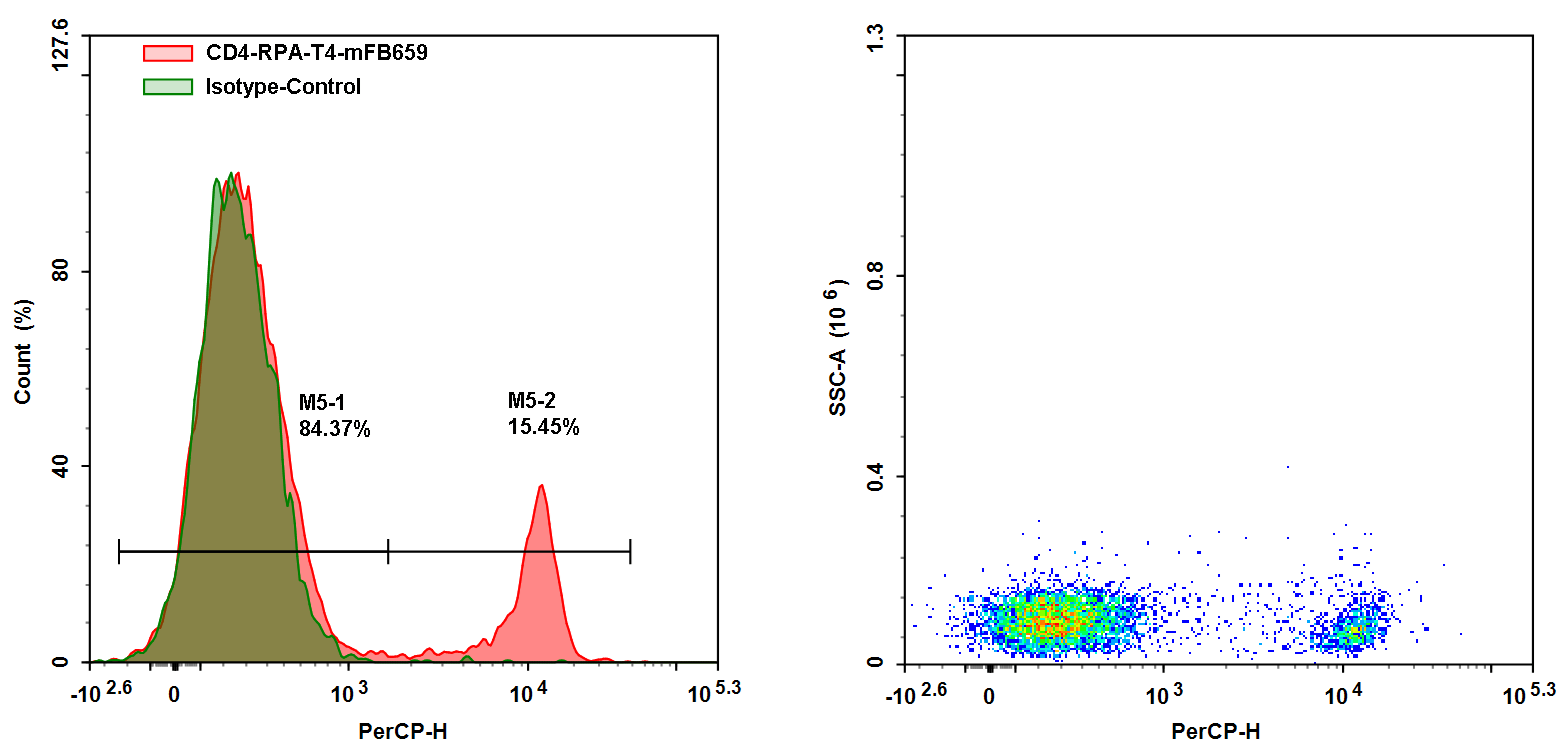The mFluor™ Blue 659 dye is optimally excited with a 488 nm blue laser, offering a significant Stokes shift with an emission peak at approximately 659 nm. This water-soluble dye and its protein conjugates exhibit robust red fluorescence when excited at 488 nm, making them ideal for flow cytometry. Compared to RPE (R-Phycoerythrin), mFluor™ Blue 659 dyes are more photostable, enhancing their suitability for fluorescence imaging. Additionally, mFluor™ Blue 659 serves as a distinctive fluorochrome for spectral flow cytometry due to its unique spectral profile, a rarity among available dyes.
The succinimidyl ester (SE) of mFluor™ Blue 659 is a widely used reagent for the conjugation of this dye to proteins or antibodies. Succinimidyl esters react selectively and efficiently with primary amines (such as the side chains of lysine residues or aminosilane-coated surfaces) at pH 7-9, forming stable covalent amide bonds. This property makes mFluor™ Blue 659 SE an excellent choice for labeling proteins, amine-modified oligonucleotides, and other amine-containing molecules.


| Catalog | Size | Price | Quantity |
|---|---|---|---|
| 1181 | 1 mg | Price |
| Molecular weight | 1063.27 |
| Solvent | DMSO |
| Correction factor (280 nm) | 0.162 |
| Extinction coefficient (cm -1 M -1) | 40000 |
| Excitation (nm) | 503 |
| Emission (nm) | 659 |
| H-phrase | H303, H313, H333 |
| Hazard symbol | XN |
| Intended use | Research Use Only (RUO) |
| R-phrase | R20, R21, R22 |
| Storage | Freeze (< -15 °C); Minimize light exposure |
| Telephone | |
| Fax | |
| sales@aatbio.com | |
| International | See distributors |
| Bulk request | Inquire |
| Custom size | Inquire |
| Technical Support | Contact us |
| Request quotation | Request |
| Purchase order | Send to sales@aatbio.com |
| Shipping | Standard overnight for United States, inquire for international |

